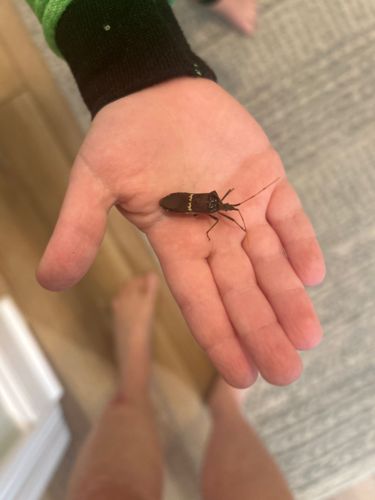Leaf-footed Bug
Scientific Name: Leptoglossus spp.
Order & Family: Hemiptera (True Bugs), Coreidae (Leaf-footed Bugs)
Size: Typically 15-20 mm (0.6-0.8 inches) in length, though some species can be larger.

Natural Habitat
Found in gardens, agricultural fields, forests, and other areas with host plants. Many species are associated with coniferous trees, fruit trees, and various garden plants.
Diet & Feeding
Herbivorous. These bugs feed on the sap of plants, often preferring developing seeds and fruits. They use their piercing-sucking mouthparts to extract plant juices.
Behavior Patterns
Leaf-footed bugs are often active during warmer months. They can fly and are sometimes attracted to lights at night. They may congregate on host plants and are known to overwinter in sheltered locations, sometimes indoors. When disturbed, they may emit an odor.
Risks & Benefits
Potential Risks: They can be considered agricultural pests, as their feeding can damage fruits and seeds, leading to economic losses for farmers. They are not known to bite humans or transmit diseases. Potential Benefits: In some ecosystems, they may play a role in seed dispersal or as a food source for predatory insects or birds, though their pest status often outweighs benefits from a human perspective.
Identified on: 9/9/2025